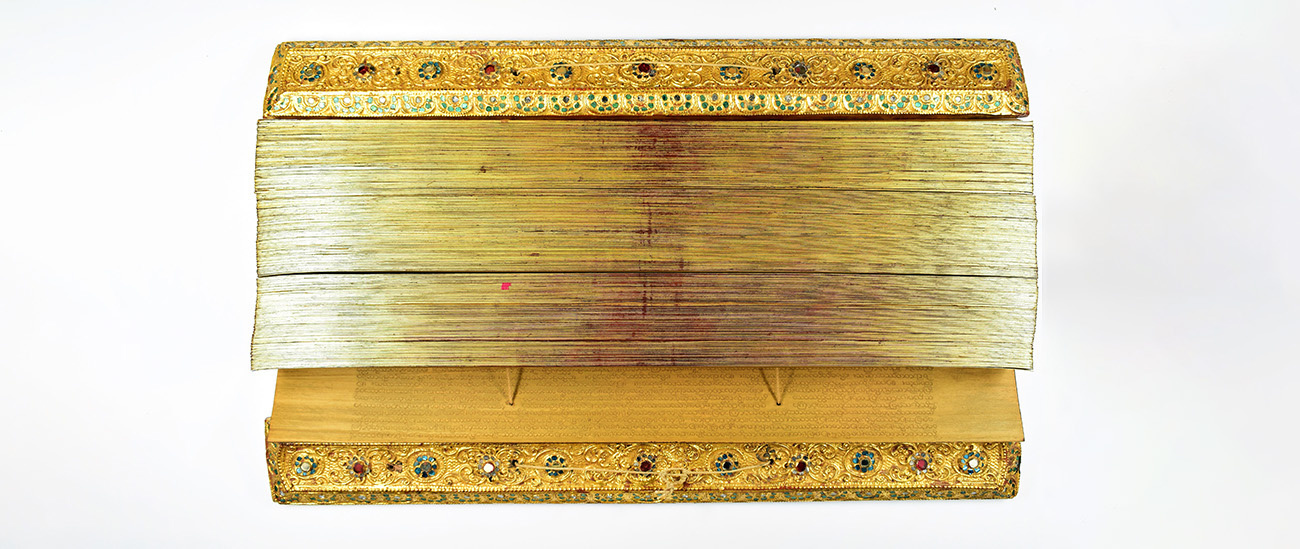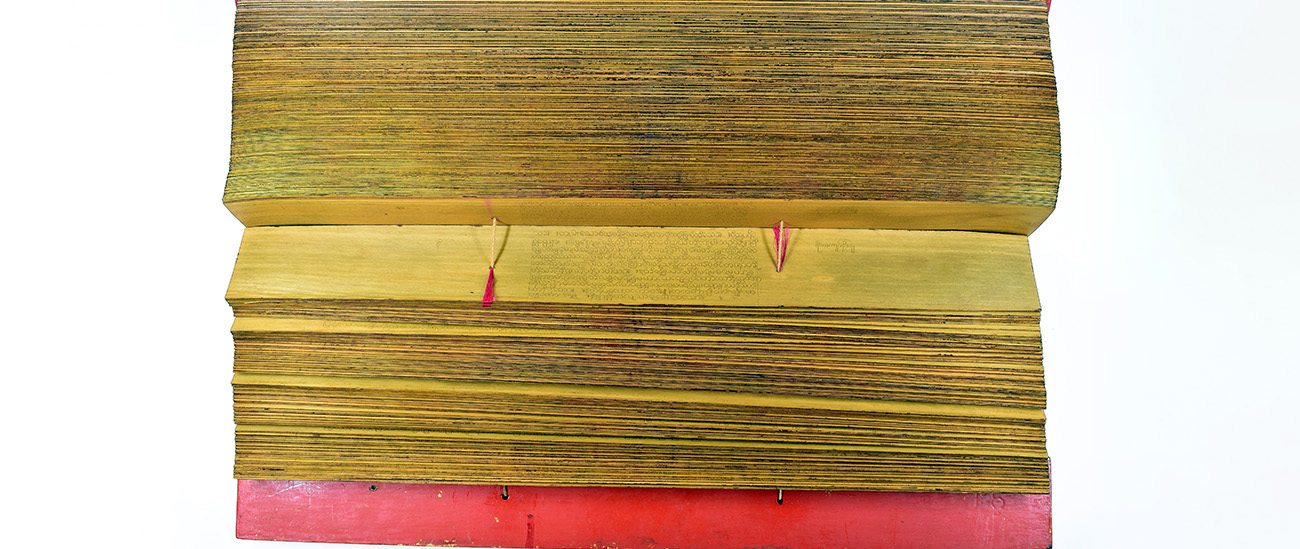Tipitaka or Pali Canon
The Buddhist canonical scriptures are called the Tipitaka or ‘three baskets’. They include monastic codes of discipline (p. Vinaya), sermons and stories with doctrinal content (p. Sutta; in Sanskrit, sutra) and texts with philosophical speculations (p. Abhidhamma). They were written down in the Pali language in the late 1st century CE in Sri Lanka.
Indian tradition holds that, following the death of the Buddha, a series of councils were held at which the monks recited the words of the master that they had memorized. Over time, these oral teachings were dictated to scribes and recorded in writing with the name the Word of the Buddha. The different communities drew up their canons in different languages.
Whilst the earliest schools, such as the Theravada, Sarvāstivāda and Dharmaguptaka, amongst others, mainly conveyed the Buddhist teachings orally, schools from the Mahayana tradition, formed between the 1st century BCE and 3rd century CE, grew up around certain writings. This would be the case, for example, of the great literary movement around the Perfection of Wisdom sutras (Prajñāparamitā). In addition to the Pali Canon, followers of Mahayana Buddhism therefore recognize the authority of other works, sutras attributed to the Buddha and commentaries by great masters.Burmese commentary on a Pali commentary (Theravada, 12th c.)
[Ms FM 7]
Complete manuscript in good condition. The gilded margins indicate that the owners of the copy were wealthy. The copy is dated 1271 (i.e. 1909 CE), but it could also be read as 1221 (?) Sakk., [K13] (i.e. 1859 CE), the coronation year of King Mindon (r. 1852-1878), the second-to-last king of the Konbaung Dynasty (1852-85). The title of the manuscript is Tika-kyawnissaya. The author of this commentary was Ū Yan, also known as Maṅ-krī: Mahā-sirijeya-sū, a scholar from the court of King Mindon. This author is especially known for having drawn up the catalogue of the royal library in Mandalay, the Piṭakat-tō-samuiṅ. This is the Burmese commentary (nissaya) on a Pali commentary called Vibhāvinī-ṭīkā, composed by the 12th-century Sri Lankan monk Sumaṅgala Thera.
Palm-leaf manuscript tied with string, with wooden covers. The covers are gilded and incrusted with small mirrors.
Dimensions: 7 x 53 x 21 cm.



